 A recent report published by the High Pay Centre shows that the median annual CEO pay of the FTSE 100 companies rose by 15.7% in 2022, from £3.38 million in 2021 to £3.91 million – double the UK CPIH inflation rate of 7.9%. Average total pay across the whole economy grew by just 6.0%, representing a real pay cut of nearly 2%.
A recent report published by the High Pay Centre shows that the median annual CEO pay of the FTSE 100 companies rose by 15.7% in 2022, from £3.38 million in 2021 to £3.91 million – double the UK CPIH inflation rate of 7.9%. Average total pay across the whole economy grew by just 6.0%, representing a real pay cut of nearly 2%.
The pay of top US CEOs is higher still. The median annual pay of S&P 500 CEOs in 2022 was a massive $14.8 million (£11.7 million). However, UK top CEOs earn a little more than those in France and Germany. The median pay of France’s CAC40 CEOs was €4.9 million (£4.2 million). This compares with a median of £4.6 million for the CEOs of the top 40 UK companies. The mean pay of Germany’s DAX30 CEOs was €6.1 million (£5.2 million) – lower than a mean of £6.0 million for the CEOs of the top 30 UK companies.
The gap between top CEO pay and that of average full-time workers narrowed somewhat after 2019 as the pandemic hit company performance. However, it has now started widening again. The ratio of the median UK CEO pay to the median pay of a UK full-time worker stood at 123.1 in 2018. This fell to 79.1 in 2020, but then grew to 108.1 in 2021 and 118.1 in 2022.
The TUC has argued that workers should be given seats on company boards and remuneration committees that decide executive pay. Otherwise, the gap is likely to continue rising, especially as remuneration committees in specific companies seek to benchmark pay against other large companies, both at home and abroad. This creates a competitive upward push on remuneration. What is more, members of remuneration committees have the incentive to be generous as they themselves might benefit from the process in the future.
Although the incomes of top CEOs is huge and growing, even if they are excluded, there is still a large gap in incomes between high and low earners generally in the UK. In March 2023, the top 1 per cent of earners had an average gross annual income of just over £200 000; the bottom 10 per cent had an average gross annual income of a little over £8500 – just 4.24% of the top 1 per cent (down from 4.36% in March 2020).
What is more, in recent months, the share of profits in GDP has been rising. In 2022 Q3, gross profits accounted for 21.2% of GDP. By 2023 Q2, this had risen to 23.4%. As costs have risen, so firms have tended to pass a greater percentage increase on to consumers, blaming these price increases on the rise in their costs.
Life at the bottom
 The poor spend a larger proportion of their income on food, electricity and gas than people on average income; these essential items have a low income elasticity of demand. But food and energy inflation has been above that of CPIH inflation.
The poor spend a larger proportion of their income on food, electricity and gas than people on average income; these essential items have a low income elasticity of demand. But food and energy inflation has been above that of CPIH inflation.
In 2022, the price of bread rose by 20.5%, eggs by 28.9%, pasta by 29.1%, butter by 29.4%, cheese by 32.6% and milk by 38.5%; the overall rise in food and non-alcoholic beverages was 16.9% – the highest rise in any of the different components of consumer price inflation. In the past two years there has been a large increase in the number of people relying on food banks. In the six months to September 2022, there was a 40% increase in new food bank users when compared to 2021.
As far as energy prices are concerned, from April 2022 to April 2023, under Ofgem’s price cap, which is based on wholesale energy prices, gas and electricity prices would have risen by 157%, from £1277 to £3286 for the typical household. The government, however, through the Energy Price Guarantee restricted the rise to an average of £2500 (a 96% rise). Also, further help was given in the form of £400 per household, paid in six monthly instalments from October 2022 to March 2023, effectively reducing the rise to £2100 (64%). Nevertheless, for the poorest of households, such a rise meant a huge percentage increase in their outgoings. Many were forced to ‘eat less and heat less’.
 Many people have got into rent arrears and have been evicted or are at risk of being so. As the ITV News article and videos linked below state: 242 000 households are experiencing homelessness including rough sleeping, sofa-surfing and B&B stays; 85% of English councils have reported an increase in the number of homeless families needing support; 97% of councils are struggling to find rental properties for homeless families.
Many people have got into rent arrears and have been evicted or are at risk of being so. As the ITV News article and videos linked below state: 242 000 households are experiencing homelessness including rough sleeping, sofa-surfing and B&B stays; 85% of English councils have reported an increase in the number of homeless families needing support; 97% of councils are struggling to find rental properties for homeless families.
Financial strains have serious effects on people’s wellbeing and can adversely affect their physical and mental health. In a policy research paper, ‘From Drained and Desperate to Affluent and Apathetic’ (see link below), the consumer organisation, Which?, looked at the impact of the cost-of-living crisis on different groups. It found that in January 2023, the crisis had made just over half of UK adults feel more anxious or stressed. It divided the population into six groups (with numbers of UK adults in each category in brackets): Drained and Desperate (9.2m), Anxious and At Risk (7.9m), Cut off by Cutbacks (8.8m), Fretting about the Future (7.7m), Looking out for Loved Ones (8.9m), Affluent and Apathetic (8.8m).
The majority of the poorest households are in the first group. As the report describes this group: ‘Severely impacted by the crisis, this segment has faced significant physical and mental challenges. Having already made severe cutbacks, there are few options left for them.’ In this group, 75% do not turn the heating on when cold, 63% skip one or more meals and 94% state that ‘It feels like I’m existing instead of living’.
Many of those on slightly higher incomes fall into the second group (Anxious and At Risk). ‘Driven by a large family and mortgage pressure, this segment has not been particularly financially stable and experienced mental health impacts. They have relied more on borrowing to ease financial pressure.’
Although inflation is now coming down, prices are still rising, interest rates have probably not yet peaked and real incomes for many have fallen significantly. Life at the bottom has got a lot harder.
Articles
- FTSE 100 CEOs get half a million pound pay rise
High Pay Centre (21/8/23)
- Call for reforms as median FTSE 100 chief executive pay topped £3.91m in 2022
Sky News, Sarah Taaffe-Maguire (22/8/23)
- FTSE 100 bosses given average 16% pay rises
Financial Times, Michael O’Dwyer, George Parker and Jim Pickard (21/8/23)
- Median pay for a FTSE 100 CEO increased from £3.38 million in 2021 to £3.91 million in 2022, the High Pay Centre said
Morningstar, Alliance News (22/8/23)
- FTSE 100 bosses ‘given average pay rise of £500,000 in 2022’
The Guardian, Rupert Neate (22/8/23)
- Big firm bosses’ pay rose 16% as workers squeezed
BBC News, Michael Race (22/8/23)
- Anxious and at risk? Britons fall into six cost of living groups, report finds
The Guardian, Robert Booth (29/7/23)
- From Drained and Desperate to Affluent and Apathetic
Which?, Nicole Chan, Katie Alpin and Ash Strange (29/7/23)
- To grasp the extent of inequality, look at the relatively well-off
LSE blog, Gerry Mitchell and Marcos González Hernando (17/7/23)
- Growing inequality across Britain has left millions of families exposed to the cost-of-living crisis
Resolution Foundation, Lalitha Try (25/1/23)
- Earned income taxed twice as heavily as capital gains for some in UK, study finds
The Guardian, Phillip Inman (20/8/23)
- Reducing inequality benefits everyone — so why isn’t it happening?
Nature, Editorial (16/8/23)
 Homeless families forced to live in tents and hotels as temporary accommodation runs out
Homeless families forced to live in tents and hotels as temporary accommodation runs outITV News, Daniel Hewitt (22/8/23)
Reports
Data
Questions
- What are the arguments for and against giving huge pay awards to CEOs?
- What are the arguments for and against raising the top rate of income tax to provide extra revenue to distribute to the poor? Distinguish between income and substitution effects.
- What policies could be adopted to alleviate poverty? Why are such policies not adopted?
- Using the ONS publication, the Effects of taxes and benefits on UK household income, find out how the distribution of income between the various decile groups of household income has changed over time? Comment on your findings.
 With waiting lists in the NHS at record highs and with the social care system in crisis, there have been growing calls for increased funding for both health and social care. The UK government has just announced tax rises to raise more revenue for both services and has specified new limits on the amounts people must pay towards their care.
With waiting lists in the NHS at record highs and with the social care system in crisis, there have been growing calls for increased funding for both health and social care. The UK government has just announced tax rises to raise more revenue for both services and has specified new limits on the amounts people must pay towards their care.
In this blog we look at the new tax rises and whether they are fair. We also look at whether the allocation of social care is fair. Clearly, the question of fairness is a contentious one, with people having very different views on what constitutes fairness between different groups in terms of incomes, assets and needs.
Funding
In terms of funding, the government has, in effect, introduced a new tax – the ‘health and social care levy’ to come into effect from April 2022. This will see a tax of 1.25% on the earned incomes of workers (both employees and the self-employed) and 1.25% on employers, making a total of 2.5% on employment income. It will initially be added to workers’ and employers’ national insurance (NI) payments. Currently national insurance is only paid by those below pension age (66). From 2023, the 1.25% levy will be separated from NI and will apply to pensioners’ earned income too.
The starting point for workers will be the same as for the rest of national insurance, currently £9568. Above this, the additional marginal rate of 1.25% will apply to all earned income. This will mean that a person earning £20 000 would pay a levy of £130.40, while someone earning £100 000 would pay £1130.40.
There will also be an additional 1.25% tax on share dividends. However, there will be no additional tax on rental income and capital gains, and on private or state pensions.
 It is estimated that the levy will raise around £14 billion per year (0.7% of GDP or 1.6% of total tax revenue), of which £11.2 billion will go to the Department of Health and Social Care in 2022/23 and £9 billion in 2023/24. This follows a rise in income tax of £8 billion and corporation tax of £17 billion announced in the March 2021 Budget. As a result, tax revenues from 2022/23 will be a higher proportion of GDP (just over 34%) than at any time over the past 70 years, except for a short period in 1969/70.
It is estimated that the levy will raise around £14 billion per year (0.7% of GDP or 1.6% of total tax revenue), of which £11.2 billion will go to the Department of Health and Social Care in 2022/23 and £9 billion in 2023/24. This follows a rise in income tax of £8 billion and corporation tax of £17 billion announced in the March 2021 Budget. As a result, tax revenues from 2022/23 will be a higher proportion of GDP (just over 34%) than at any time over the past 70 years, except for a short period in 1969/70.
Is the tax fair?
In a narrow sense, it can be argued that the levy is fair, as it is applied at the same percentage rate on all earned income. Thus, the higher a person’s earnings, the greater the amount they will pay. Also, it is mildly progressive. This is because, with a levy-free allowance of just under £10 000, the levy as a proportion of income earned rises gently as income rises: in other words, the average levy rate is higher on higher earners than on lower earners.
But national insurance as a whole is regressive as the rate currently drops from 12% to 2%, and with the levy will drop from 13.25% to 3.25%, once the upper threshold is reached. Currently the threshold is £50 270. As incomes rise above that level, so the proportion paid in national insurance falls. Politically, therefore, it makes sense to decouple the levy from NI, if it is being promoted as being fair as an additional tax on income earners.
Is it fair between the generations? Pensioners who earn income will pay the levy on that income at the same rate as everyone else (but no NI). But most pensioners’ main or sole source of income is their pensions and some, in addition, earn rent on property they own. Indeed, some pensioners have considerable private pensions or rental income. These sources of income will not be subject to the levy. Many younger people whose sole source of income is their wages will see this as unfair between the generations.
Allocation of funds
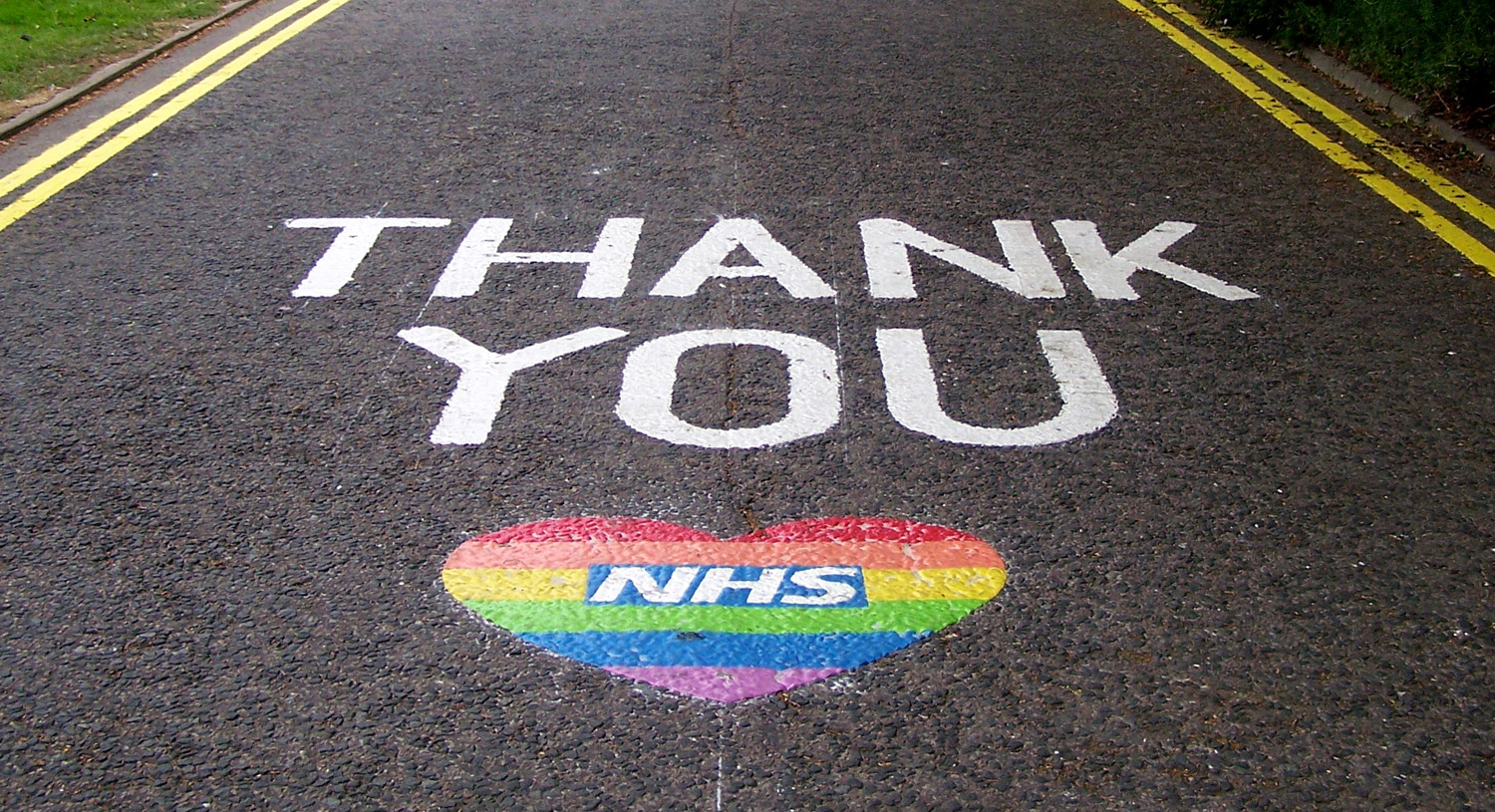 For the next few years, most of the additional funding will go to the NHS to help reduced waiting lists, which rocketed with the diversion of resources to treating COVID patients. Of the additional £11.2 billion for health and social care in 2022/23, some £9.4 billion will go to the NHS; and of the £9 billion in 2023/24, some £7.2 billion will go to the NHS. This leaves only an additional £1.8 billion each year for social care.
For the next few years, most of the additional funding will go to the NHS to help reduced waiting lists, which rocketed with the diversion of resources to treating COVID patients. Of the additional £11.2 billion for health and social care in 2022/23, some £9.4 billion will go to the NHS; and of the £9 billion in 2023/24, some £7.2 billion will go to the NHS. This leaves only an additional £1.8 billion each year for social care.
The funding should certainly help reduce NHS waiting lists, but the government refused to say by how much. Also there is a major staff shortage in the NHS, with many employees having returned to the EU following Brexit and fewer new employees coming from the EU. It may be that the staff shortage will push up wages, which will absorb some of the increase in funding.
The additional money from the levy going to social care would be wholly insufficient on its own to tackle the crisis. As with the NHS, the social care sector is facing an acute staff shortage, again aggravated by Brexit. Wages are low, and when travel time between home visits is taken into account, many workers receive well below the minimum wage. Staff in care homes often find themselves voluntarily working extra hours for no additional pay so as to provide continuity of care. Often levels of care are well below what carers feel is necessary.
Paying for social care
 The government also announced new rules for the level of contributions by individuals towards their care costs. The measures in England are as follows. The other devolved nations have yet to announce their measures.
The government also announced new rules for the level of contributions by individuals towards their care costs. The measures in England are as follows. The other devolved nations have yet to announce their measures.
- Those with assets of less than £20 000 will not have to contribute towards their care costs from their assets, but may have to contribute from their income.
- Those with assets between £20 000 and £100 000 will get means-tested help towards their care costs.
- Those with assets over £100 000 will initially get no help towards their care costs. This is increasing from the current limit of £23 250
- There will be a limit of £86 000 to the amount people will have to contribute towards their care costs over their lifetime (from October 2023). These costs include both care in a care home and care at home.
- These amounts will apply only to care costs and not to the board and lodging costs in care homes. The government has not said how much people could be expected to contribute towards these living costs. A problem is that care homes generally do not itemise costs and hence it may be hard to distinguish care costs from living costs.
- Where people’s care costs are fully or partly covered, these will be paid by their local authority.
- A house will only count as a person’s asset if the person is going into a care home and it is not occupied by a spouse or partner. All financial assets, by contrast, will count.
- Many people in care homes will not be judged to be frail enough to be in receipt of support from their local authority. These people’s expenditure would not count towards the cap.
Setting the cap to the amount people must pay at the relatively high figure of £86 000 may ease the pressure on local authorities, as many people in care homes will die before the cap is reached. However, those who live longer and who get their care paid for above the cap, will pay no more no matter what their level of assets, even though they may be very rich. This could be seen to be unfair. A fairer system would be one where a proportion of a person’s assets had to be used to pay for care with no upper limit.
Also, the £1.8 billion is likely to fall well short of what local authorities will need to bring social care back to the levels considered acceptable, especially as the asset limit to support is being raised from £23 250 to £100 000. Local authority expenditure on social care fell by 7.5% per person in real terms between 2009/10 and 2019/20. This means that local authorities may have to increase council tax to top up the amount provided by the government from the levy.
Articles
- An initial response to the Prime Minister’s announcement on health, social care and National Insurance
Institute for Fiscal Studies Press Release, Paul Johnson, Carl Emmerson, Helen Miller, David Phillips, George Stoye, Isaac Delestre, Isabel Stockton, Kate Ogden, Robert Joyce, Stuart Adam, Tom Waters, Max Warner and Ben Zaranko (7/9/21)
- National Insurance rates to rise to fund social care crisis – how much more will you pay?
Which? News, Danielle Richardson (7/9/21)
- Social care tax rise: Boris Johnson wins Commons vote
BBC News (8/9/21)
- Will the cap really fix the social care system?
BBC News, Nick Triggle (8/9/21)
- National Insurance contributions to rise by 1.25% from April 2022 to fund social care costs
Money Saving Expert, James Flanders (7/9/21)
- Boris Johnson plan to fund health and social care lifts UK tax burden to 70-year high
Financial Times, George Parker, Laura Hughes and Chris Giles (7/9/21)
- Boris Johnson has created a ‘social care plan’ without any plan for social care
The Guardian, Frances Ryan (7/9/21)
- Analysis: The Government’s plans for health and social care
Reform, William Mills (8/9/21)
- Analysis: What does Boris Johnson’s health and social care tax mean for Scotland?
The Scotsman, Martyn McLaughlin (7/9/21)
- Social care tax rise is austerity by another name – economist Q&A
The Conversation, Alex de Ruyter (8/9/21)
- National insurance: a UK tax which is complex and vulnerable to political intervention
The Conversation, Gavin Midgley (8/9/21)
Video
Government document
Data
Questions
- How would you define a ‘fair’ way of funding social care?
- Distinguish between a proportional, progressive and regressive tax. How would you categorise (a) the new health and social care levy; (b) national insurance; (c) income tax; (d) VAT?
- Argue the case for providing social care free at the point of use to all those who require it.
- Argue the case for charging a person for some or all of their social care, with the amount charged being based on (a) the person’s income; (b) the person’s wealth; (c) both income and wealth.
- Argue the case for and against capping the amount a person should pay towards their social care.
- When a tax is used to raise revenue for a specific purpose it is known as a ‘hypothecated tax’. What are the advantages and disadvantages of using a hypothecated tax for funding health and social care?
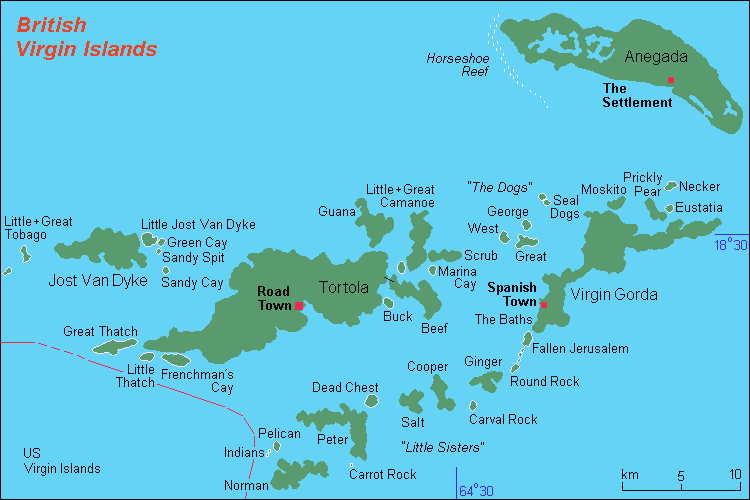 Tax avoidance has been in the news since the publication of the Panama papers, which show the use of offshore tax havens by rich individuals and companies, partly for tax avoidance, partly for money laundering and other criminal activities – some by corrupt politicians and their associates – and partly to take advantage of lower regulation of financial dealing.
Tax avoidance has been in the news since the publication of the Panama papers, which show the use of offshore tax havens by rich individuals and companies, partly for tax avoidance, partly for money laundering and other criminal activities – some by corrupt politicians and their associates – and partly to take advantage of lower regulation of financial dealing.
There are many tax havens around the world, including Switzerland, Hong Kong, British overseas territories (such as the British Virgin Islands, the Cayman Islands and Bermuda), Jersey, Singapore and certain US states  (such as Arizona, Delaware, Nevada and Wyoming).
(such as Arizona, Delaware, Nevada and Wyoming).
Here we focus on tax avoidance. This is the management of tax affairs by individuals or firms so as to avoid or minimise the payment of taxes. Tax avoidance is legal, unlike tax evasion, which is the practice of not declaring taxable income.
In a statement from the White House, directly after the publication of the Panama papers, President Obama spoke about the huge international scale of tax evasion and tax avoidance:
“A lot of it is legal, but that’s exactly the problem. It’s not that [people are] breaking the laws, it’s that the laws are so poorly designed that they allow people, if they’ve got enough lawyers and enough accountants, to wiggle out of responsibilities that ordinary citizens are having to abide by.
Here in the United States, there are loopholes that only wealthy individuals and powerful corporations have access to. They have access to offshore accounts, and they are gaming the system. Middle-class families are not in the same position to do this. In fact, a lot of these loopholes come at the expense of middle-class families, because that lost revenue has to be made up somewhere. Alternatively, it means that we’re not investing as much as we should in schools, in making college more affordable, in putting people back to work rebuilding our roads, our bridges, our infrastructure, creating more opportunities for our children.”

Tax avoidance, whether in tax havens, or through exploiting loopholes in the tax system may be legal. But is it fair?
Various principles of a tax system can be identified. These include:
|
|
| • |
Horizontal equity |
People in the same situation should be treated equally. For example, people earning the same level of income and with the same personal circumstances (e.g. number and type of dependants, size of mortgage, etc.) should pay the same level of income tax. |
| • |
Vertical equity |
Taxes should be ‘fairly’ apportioned between rich and poor. The rich should pay proportionately more taxes than the poor. |
| • |
Equity between recipients of government services |
Under the ‘benefit principle’, it is argued that those who receive the most benefits from government expenditure ought to pay the most in taxes. For example, it can be argued that roads should be paid for from fuel tax. |
| • |
Difficulty of evasion and possibly of avoidance |
If it is desirable to have a given tax, people should not be able to escape paying. |
| • |
Non-distortion |
Taxes alter market signals: taxes on goods and services alter market prices; taxes on income alter wages. They should not do this in an undesirable direction. |
| • |
Convenience to the taxpayer |
Taxes should be certain and clearly understood by taxpayers so that they can calculate their tax liabilities. The method of payment should be straightforward. |
| • |
Convenience to the government |
Tax rates should be simple to adjust and as cheap to collect as possible. |
| • |
Minimal disincentive effects |
Taxes may discourage people from working longer or harder, from saving, from investing or from taking initiative. It is desirable that these disincentives should be kept to a minimum. |
Of course, not all these requirements can be met at the same time. One of the most serious conflicts is between vertical equity and the need to keep disincentives to a minimum. The more steeply the rich are taxed, it is argued, the more serious are the disincentive effects on them likely to be (see the blog post from 2012, The 50p income tax rate and the Laffer curve). Another is between vertical equity and equity between recipients of services. Some of the people most in need of government support are the poorest and hence pay the least taxes.
The crucial question is what is regarded as ‘fair’. What is vertically equitable? According to the second article below, people’s preferred tax rates depend on how information is presented. If information is presented on how much tax is paid by the rich, people generally feel that the rich pay too much. If, however, information is presented on how much income people are left with after paying tax, people feel that the rich still have too much and ought to pay more tax.
 The majority of people in the UK feel that tax avoidance, although legal, is morally wrong. According to the results of an HMRC survey in 2015, “the majority (63%) of respondents felt that the use of tax avoidance schemes was widespread. However, the majority (61%) also responded that it was never acceptable to use a tax avoidance scheme. The most frequent reason given as to why it was unacceptable was that ‘it is unfair on others who pay their taxes’.”
The majority of people in the UK feel that tax avoidance, although legal, is morally wrong. According to the results of an HMRC survey in 2015, “the majority (63%) of respondents felt that the use of tax avoidance schemes was widespread. However, the majority (61%) also responded that it was never acceptable to use a tax avoidance scheme. The most frequent reason given as to why it was unacceptable was that ‘it is unfair on others who pay their taxes’.”
In making judgements about the fairness of tax, people generally have inaccurate knowledge about the distribution of income, believing that it is more equal than it really is, and about the progressiveness of the tax system, believing that it is more progressive than it really is. Despite this, they want post-tax income distribution to be more equal.
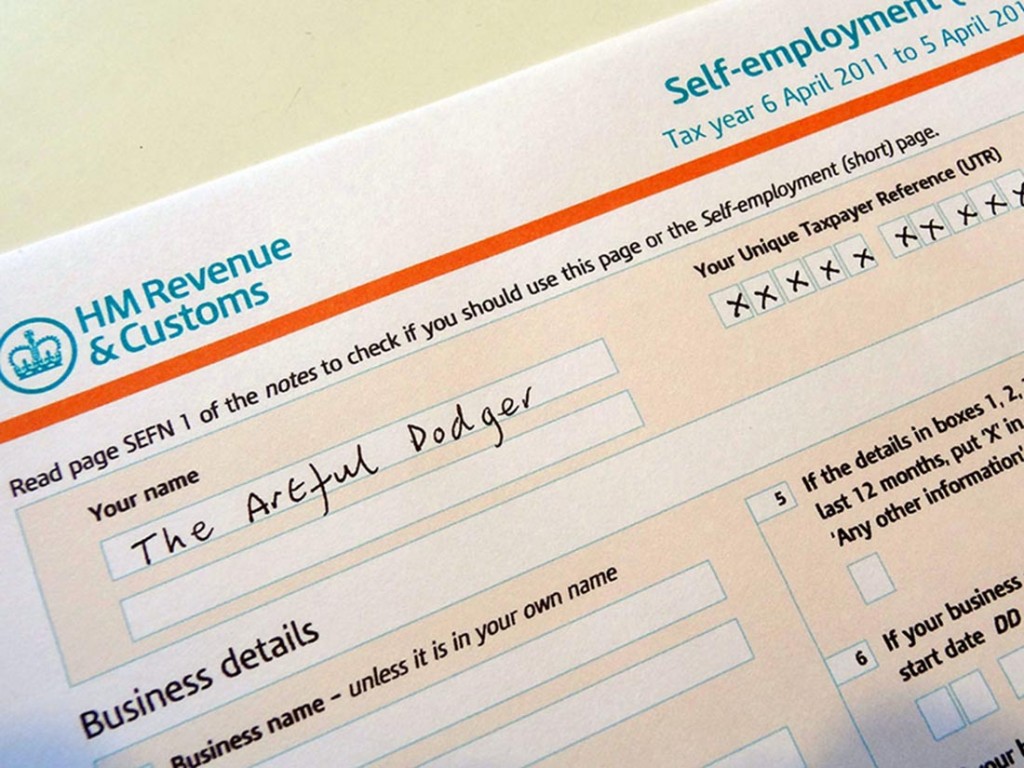 What is more, although people generally disapprove of tax avoidance, it is the system that allows the avoidance of taxes that they want changing. As long as it is possible to avoid taxes, such as giving gifts to children to avoid inheritance tax (as long as the gift is made more than seven years before the person’s death), most people see no reason why they should not do so themselves.
What is more, although people generally disapprove of tax avoidance, it is the system that allows the avoidance of taxes that they want changing. As long as it is possible to avoid taxes, such as giving gifts to children to avoid inheritance tax (as long as the gift is made more than seven years before the person’s death), most people see no reason why they should not do so themselves.
The following articles look at tax avoidance and people’s attitudes towards it. They are all drawn from The Conversation, “an independent source of news and views, sourced from the academic and research community and delivered direct to the public.”.
Articles
Explainer: what are ‘tax havens’? The Conversation, Tommaso Faccio (5/4/16)
When it comes to tax, how do we decide what’s fair? The Conversation, Stian Reimers (8/4/16)
Six things a tax haven expert learned from the Panama Papers The Conversation, Ronen Palan (6/4/16)
Documents
The Panama Papers The International Consortium of Investigative Journalists
Exploring public attitudes to tax avoidance in 2015: HM Revenue and Customs Research Report 401 HMRC, Preena Shah (February 2016)
2010 to 2015 government policy: tax evasion and avoidance HMRC/HM Treasury (8/5/15)
Questions
- Distinguish between tax avoidance and tax evasion.
- Give some examples of tax avoidance.
- Look through the various principles of a tax system and identify any conflicts.
- What problems are there in having a highly progressive tax system?
- What is a ‘shell company’? How can it be used to avoid and evade taxes?
- What are bearer shares and bonds? Why were they abolished in the UK in 2015?
- What legitimate reasons may there be for a company or individual using a tax haven?
- To what extent might increased transparency in tax affairs discourage individuals and companies from engaging in aggressive tax avoidance?
- What light does/can behavioural economics shed on people’s perceptions of fairness?
- How might the use of absolute amounts or percentages influence people’s thinking about the fairness of a tax system? What implications does this have for politicians in framing tax policy?
- In the principal–agent problem, where the principals are the tax authorities and the agents are taxpayers, why does asymmetric information arise and why is it a problem? How do the tax authorities seek to reduce this problem?
 Back in October, we looked at the growing pressure in the UK for a sugar tax. The issue of childhood obesity was considered by the Parliamentary Health Select Committee and a sugar tax, either on sugar generally, or specifically on soft drinks, was one of the proposals being considered to tackle the problem. The committee studied a report by Public Health England, which stated that:
Back in October, we looked at the growing pressure in the UK for a sugar tax. The issue of childhood obesity was considered by the Parliamentary Health Select Committee and a sugar tax, either on sugar generally, or specifically on soft drinks, was one of the proposals being considered to tackle the problem. The committee studied a report by Public Health England, which stated that:
Research studies and impact data from countries that have already taken action suggest that price increases, such as by taxation, can influence purchasing of sugar sweetened drinks and other high sugar products at least in the short-term with the effect being larger at higher levels of taxation.
In his Budget on 16 March, the Chancellor announced that a tax would be imposed on manufacturers of soft drinks from April 2018. This will be at a rate of 18p per litre on drinks containing between 5g and 8g of sugar per 100ml, such as Dr Pepper, Fanta and Sprite, and 24p per litre for drinks with more than 8g per 100ml, such as Coca-Cola, Pepsi and Red Bull.
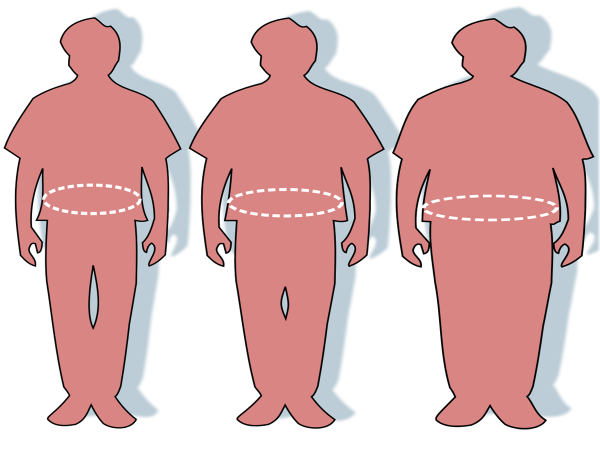 Whilst the tax has been welcomed by health campaigners, there are various questions about (a) how effective it is likely to be in reducing childhood obesity; (b) whether it will be enough or whether other measures will be needed; and (c) whether it is likely to raise the £520m in 2018/19, falling to £455m by 2020/21, as predicted by the Treasury: money the government will use for promoting school sport and breakfast clubs.
Whilst the tax has been welcomed by health campaigners, there are various questions about (a) how effective it is likely to be in reducing childhood obesity; (b) whether it will be enough or whether other measures will be needed; and (c) whether it is likely to raise the £520m in 2018/19, falling to £455m by 2020/21, as predicted by the Treasury: money the government will use for promoting school sport and breakfast clubs.
These questions are all linked. If demand for such drinks is relatively inelastic, the drinks manufacturers will find it easier to pass the tax on to consumers and the government will raise more revenue. However, it will be less effective in cutting sugar consumption and hence in tackling obesity. In other words, there is a trade off between raising revenue and cutting consumption.
 This incidence of tax is not easy to predict. Part of the reason is that much of the market is a bilateral oligopoly, with giant drinks manufacturers selling to giant supermarket chains. In such circumstances, the degree to which the tax can be passed on depends on the bargaining strength and skill of both sides. Will the supermarkets be able to put pressure on the manufacturers to absorb the tax themselves and not pass it on in the wholesale price? Or will the demand be such, especially for major brands such as Coca-Cola, that the supermarkets will be willing to accept a higher price from the manufacturers and then pass it on to the consumer?
This incidence of tax is not easy to predict. Part of the reason is that much of the market is a bilateral oligopoly, with giant drinks manufacturers selling to giant supermarket chains. In such circumstances, the degree to which the tax can be passed on depends on the bargaining strength and skill of both sides. Will the supermarkets be able to put pressure on the manufacturers to absorb the tax themselves and not pass it on in the wholesale price? Or will the demand be such, especially for major brands such as Coca-Cola, that the supermarkets will be willing to accept a higher price from the manufacturers and then pass it on to the consumer?
Then there is the question of the response of the manufacturers. How easy will it be for them to reformulate their drinks to reduce sugar content and yet still retain sales? For example, can they produce a product which tastes like a high sugar drink,  but really contains a mix between sugar and artificial sweeteners – effectively a hybrid between a ‘normal’ and a low-cal version? How likely are they to reduce the size of cans, say from 330ml to 300ml, to avoid raising prices?
but really contains a mix between sugar and artificial sweeteners – effectively a hybrid between a ‘normal’ and a low-cal version? How likely are they to reduce the size of cans, say from 330ml to 300ml, to avoid raising prices?
The success of the tax on soft drinks in cutting sugar consumption depends on whether it is backed up by other policies. The most obvious of these would be to impose a tax on sugar in other products, including cakes, biscuits, low-fat yoghurts, breakfast cereals and desserts, and also many savoury products, such as tinned soups, ready meals and sauces. But there are other policies too. The Public Health England report recommended a national programme to educate people on sugar in foods; reducing price promotions of sugary food and drink; removing confectionery or other sugary foods from end of aisles and till points in supermarkets; setting broader and deeper controls on advertising of high-sugar foods and drinks to children; and reducing the sugar content of the foods we buy through reformulation and portion size reduction.
Articles
- Sugar tax: How it will work?
BBC News, Nick Triggle (16/3/16)
- Will a sugar tax actually work?
The Guardian, Alberto Nardelli and George Arnett (16/3/16)
- Coca-Cola and other soft drinks firms hit back at sugar tax plan
The Guardian, Sarah Butler (17/3/16)
- Sugar tax could increase calories people consume, economic experts warn
The Telegraph, Kate McCann, and Steven Swinford (17/3/16)
- Nudge, nudge! How the sugar tax will help British diets
Financial Times, Anita Charlesworth (18/3/16)
- Is the sugar tax an example of the nanny state going too far?
Financial Times (19/3/16)
- Government’s £520m sugar tax target ‘highly dubious’, analysts warn
The Telegraph, Ben Martin (17/3/16)
- Sorry Jamie Oliver, I’d be surprised if sugar tax helped cut obesity
The Conversation, Isabelle Szmigin (17/3/16)
- Sugar sweetened beverage taxes
What Works for Health (17/12/15)
Questions
- What determines the price elasticity of demand for sugary drinks in general (as opposed to one particular brand)?
- How are drinks manufacturers likely to respond to the sugar tax?
- How are price elasticity of demand and supply relevant in determining the incidence of the sugar tax between manufacturers and consumers? How is the degree of competition in the market relevant here?
- What is meant by a socially optimal allocation of resources?
- If the current consumption of sugary drinks is not socially optimal, what categories of market failure are responsible for this?
- Will a sugar tax fully tackle these market failures? Explain.
- Is a sugar tax progressive, regressive or proportional? Explain.
- Assess the argument that the tax on sugar in soft drinks may actually increase the amount that people consume.
- The sugar tax can be described as a ‘hypothecated tax’. What does this mean and is it a good idea?
- Compare the advantages and disadvantages of a tax on sugar in soft drinks with (a) banning soft drinks with more than a certain amount of sugar per 100ml; (b) a tax on sugar; (c) a tax on sugar in all foods and drinks.
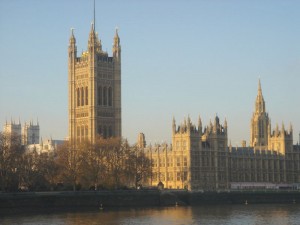 What will be the effect of raising tax allowances – the threshold at which people start paying income tax? The Coalition government in the UK has a policy of raising the threshold to £10,000 by 2015/16. As a step on this road, the present plan is to raise the threshold from £7475 in 2011/12 to £8105 in 2012/13. The Liberal Democrats, however, are urging the Chancellor to raise allowances more quickly.
What will be the effect of raising tax allowances – the threshold at which people start paying income tax? The Coalition government in the UK has a policy of raising the threshold to £10,000 by 2015/16. As a step on this road, the present plan is to raise the threshold from £7475 in 2011/12 to £8105 in 2012/13. The Liberal Democrats, however, are urging the Chancellor to raise allowances more quickly.
The government maintains that raising the personal allowance is progressive – that it will give relatively more help to the poor. New research by the Institute for Fiscal Studies, however, casts doubt on this claim. The IFS demonstrates that the benefits will be unevenly distributed, with the greatest benefits going to middle-income families where more than one person works but where no-one earns the higher tax rate. The poorest people – those earning below the threshold – will gain nothing at all.
Read the following articles and the IFS report and establish just who would benefit by a rise in the tax threshold and whether or not the move could be described at ‘progressive’.
Articles
Tax move ‘benefits better-off’ Independent, Joe Churcher (9/3/12)
Raising tax threshold would benefit rich more than poor, says IFS MyFinances.co.uk (11/3/12)
Rise in income tax threshold would help the rich Financial Times, Vanessa Houlder (9/3/12)
Budget 2012: raising the personal tax allowance threshold isn’t fair Guardian blog, Heather Stewart (9/3/12)
IFS report
A £10,000 personal allowance: who would benefit, and would it boost the economy? IFS, James Browne (March 2012)
Questions
- Define the term ‘progressive tax’.
- For what reasons might raising the personal tax allowance (a) be progressive; (b) not be progressive?
- How does eliminating child benefit for any families where either parent earns the higher tax rate affect the progressiveness of raising income tax thresholds?
- What additional measures could be taken to ensure that raising tax thresholds was progressive across the whole income range and for all households?
 A recent report published by the High Pay Centre shows that the median annual CEO pay of the FTSE 100 companies rose by 15.7% in 2022, from £3.38 million in 2021 to £3.91 million – double the UK CPIH inflation rate of 7.9%. Average total pay across the whole economy grew by just 6.0%, representing a real pay cut of nearly 2%.
A recent report published by the High Pay Centre shows that the median annual CEO pay of the FTSE 100 companies rose by 15.7% in 2022, from £3.38 million in 2021 to £3.91 million – double the UK CPIH inflation rate of 7.9%. Average total pay across the whole economy grew by just 6.0%, representing a real pay cut of nearly 2%. The poor spend a larger proportion of their income on food, electricity and gas than people on average income; these essential items have a low income elasticity of demand. But food and energy inflation has been above that of CPIH inflation.
The poor spend a larger proportion of their income on food, electricity and gas than people on average income; these essential items have a low income elasticity of demand. But food and energy inflation has been above that of CPIH inflation.  Many people have got into rent arrears and have been evicted or are at risk of being so. As the ITV News article and videos linked below state: 242 000 households are experiencing homelessness including rough sleeping, sofa-surfing and B&B stays; 85% of English councils have reported an increase in the number of homeless families needing support; 97% of councils are struggling to find rental properties for homeless families.
Many people have got into rent arrears and have been evicted or are at risk of being so. As the ITV News article and videos linked below state: 242 000 households are experiencing homelessness including rough sleeping, sofa-surfing and B&B stays; 85% of English councils have reported an increase in the number of homeless families needing support; 97% of councils are struggling to find rental properties for homeless families. Homeless families forced to live in tents and hotels as temporary accommodation runs out
Homeless families forced to live in tents and hotels as temporary accommodation runs out With waiting lists in the NHS at record highs and with the social care system in crisis, there have been growing calls for increased funding for both health and social care. The UK government has just announced tax rises to raise more revenue for both services and has specified new limits on the amounts people must pay towards their care.
With waiting lists in the NHS at record highs and with the social care system in crisis, there have been growing calls for increased funding for both health and social care. The UK government has just announced tax rises to raise more revenue for both services and has specified new limits on the amounts people must pay towards their care. It is estimated that the levy will raise around £14 billion per year (0.7% of GDP or 1.6% of total tax revenue), of which £11.2 billion will go to the Department of Health and Social Care in 2022/23 and £9 billion in 2023/24. This follows a rise in income tax of £8 billion and corporation tax of £17 billion announced in the March 2021 Budget. As a result,
It is estimated that the levy will raise around £14 billion per year (0.7% of GDP or 1.6% of total tax revenue), of which £11.2 billion will go to the Department of Health and Social Care in 2022/23 and £9 billion in 2023/24. This follows a rise in income tax of £8 billion and corporation tax of £17 billion announced in the March 2021 Budget. As a result,  For the next few years, most of the additional funding will go to the NHS to help reduced waiting lists, which rocketed with the diversion of resources to treating COVID patients. Of the additional £11.2 billion for health and social care in 2022/23, some £9.4 billion will go to the NHS; and of the £9 billion in 2023/24, some £7.2 billion will go to the NHS. This leaves only an additional £1.8 billion each year for social care.
For the next few years, most of the additional funding will go to the NHS to help reduced waiting lists, which rocketed with the diversion of resources to treating COVID patients. Of the additional £11.2 billion for health and social care in 2022/23, some £9.4 billion will go to the NHS; and of the £9 billion in 2023/24, some £7.2 billion will go to the NHS. This leaves only an additional £1.8 billion each year for social care. The government also announced new rules for the level of contributions by individuals towards their care costs. The measures in England are as follows. The other devolved nations have yet to announce their measures.
The government also announced new rules for the level of contributions by individuals towards their care costs. The measures in England are as follows. The other devolved nations have yet to announce their measures.








